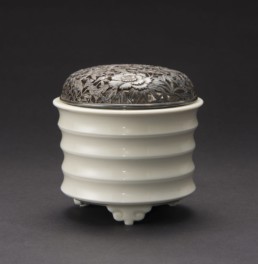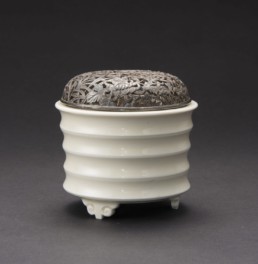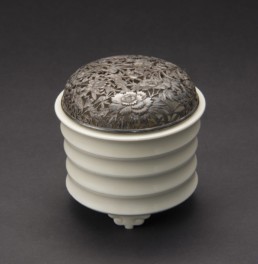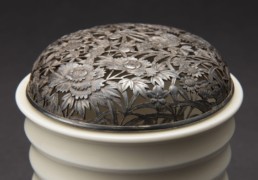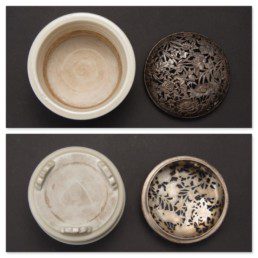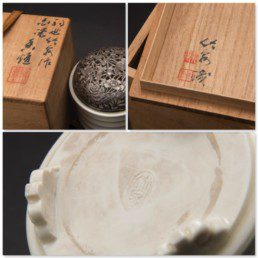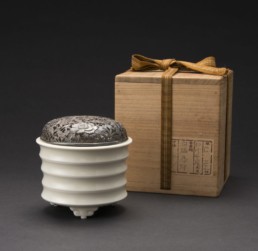Porcelain Incense Burner by Miura Chikusen (1854 – 1915)
Artist:Miura Chikusen (1854 - 1915)Era:MeijiPrice:$2,500Inquire:info@shirakuragallery.com
This Meiji period incense burner is made of fine white porcelain with a silver globe decorated with autumn foliage. As with much of Japanese pottery from this era, it is fashioned after classic Chinese pieces from the Song Dynasty. The potter, first generation Miura Chikusen, is of the same generation as many of the better known Imperial Court artists (Kozan, Siefu, Tozan, etc…) and just as accomplished in terms of mastery of technique, level of artistic expression, and volume of pieces produced.
Chikusen (1854 – 1915) was an exceptionally skilled Meiji potter who specialized in high-quality Kiyomizu-yaki and Kyo-yaki porcelains used in sencha. From the age of 13 he apprenticed under Takahashi Dohachi III and later in 1883 at the age of 29, established his own kiln in the illustrious Gojo-zaka pottery district of Kyoto. A multi-talented artist, Chikusen was also an accomplished painter, poet, and calligraphist who traveled in literati circles. His ceramic painting is unmatched, typically employing brilliant cobalt blues and soft vermilions to emulate Ming and European motifs.
In fine antique condition, this piece is 4 inches across at its widest point (10.2 cm) and stands just over 4.1 inches tall (10.4 cm). It bears the artist’s seal on the base and comes with a certification box by 4th generation Miura Chikusen [additional information and examples of all signature and seals available upon request].
Additional Resources:
https://www.philamuseum.org/collections/permanent/47118.html?mulR=1737128462%7C8
http://asianart.emuseum.com/view/objects/asitem/items$0040:9862
